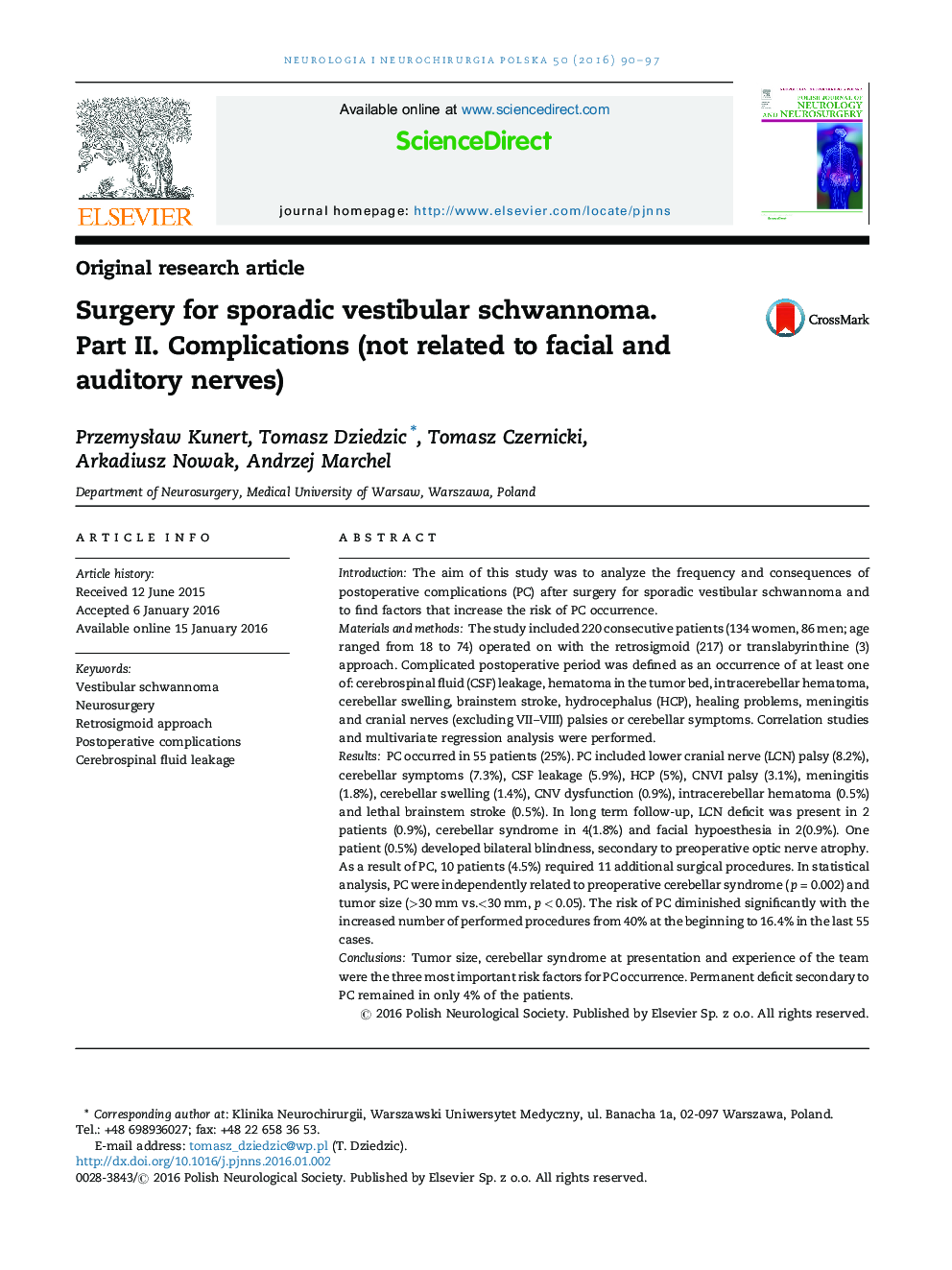| کد مقاله | کد نشریه | سال انتشار | مقاله انگلیسی | نسخه تمام متن |
|---|---|---|---|---|
| 2152598 | 1090126 | 2016 | 8 صفحه PDF | دانلود رایگان |

IntroductionThe aim of this study was to analyze the frequency and consequences of postoperative complications (PC) after surgery for sporadic vestibular schwannoma and to find factors that increase the risk of PC occurrence.Materials and methodsThe study included 220 consecutive patients (134 women, 86 men; age ranged from 18 to 74) operated on with the retrosigmoid (217) or translabyrinthine (3) approach. Complicated postoperative period was defined as an occurrence of at least one of: cerebrospinal fluid (CSF) leakage, hematoma in the tumor bed, intracerebellar hematoma, cerebellar swelling, brainstem stroke, hydrocephalus (HCP), healing problems, meningitis and cranial nerves (excluding VII–VIII) palsies or cerebellar symptoms. Correlation studies and multivariate regression analysis were performed.ResultsPC occurred in 55 patients (25%). PC included lower cranial nerve (LCN) palsy (8.2%), cerebellar symptoms (7.3%), CSF leakage (5.9%), HCP (5%), CNVI palsy (3.1%), meningitis (1.8%), cerebellar swelling (1.4%), CNV dysfunction (0.9%), intracerebellar hematoma (0.5%) and lethal brainstem stroke (0.5%). In long term follow-up, LCN deficit was present in 2 patients (0.9%), cerebellar syndrome in 4(1.8%) and facial hypoesthesia in 2(0.9%). One patient (0.5%) developed bilateral blindness, secondary to preoperative optic nerve atrophy. As a result of PC, 10 patients (4.5%) required 11 additional surgical procedures. In statistical analysis, PC were independently related to preoperative cerebellar syndrome (p = 0.002) and tumor size (>30 mm vs.<30 mm, p < 0.05). The risk of PC diminished significantly with the increased number of performed procedures from 40% at the beginning to 16.4% in the last 55 cases.ConclusionsTumor size, cerebellar syndrome at presentation and experience of the team were the three most important risk factors for PC occurrence. Permanent deficit secondary to PC remained in only 4% of the patients.
Journal: Neurologia i Neurochirurgia Polska - Volume 50, Issue 2, March–April 2016, Pages 90–97